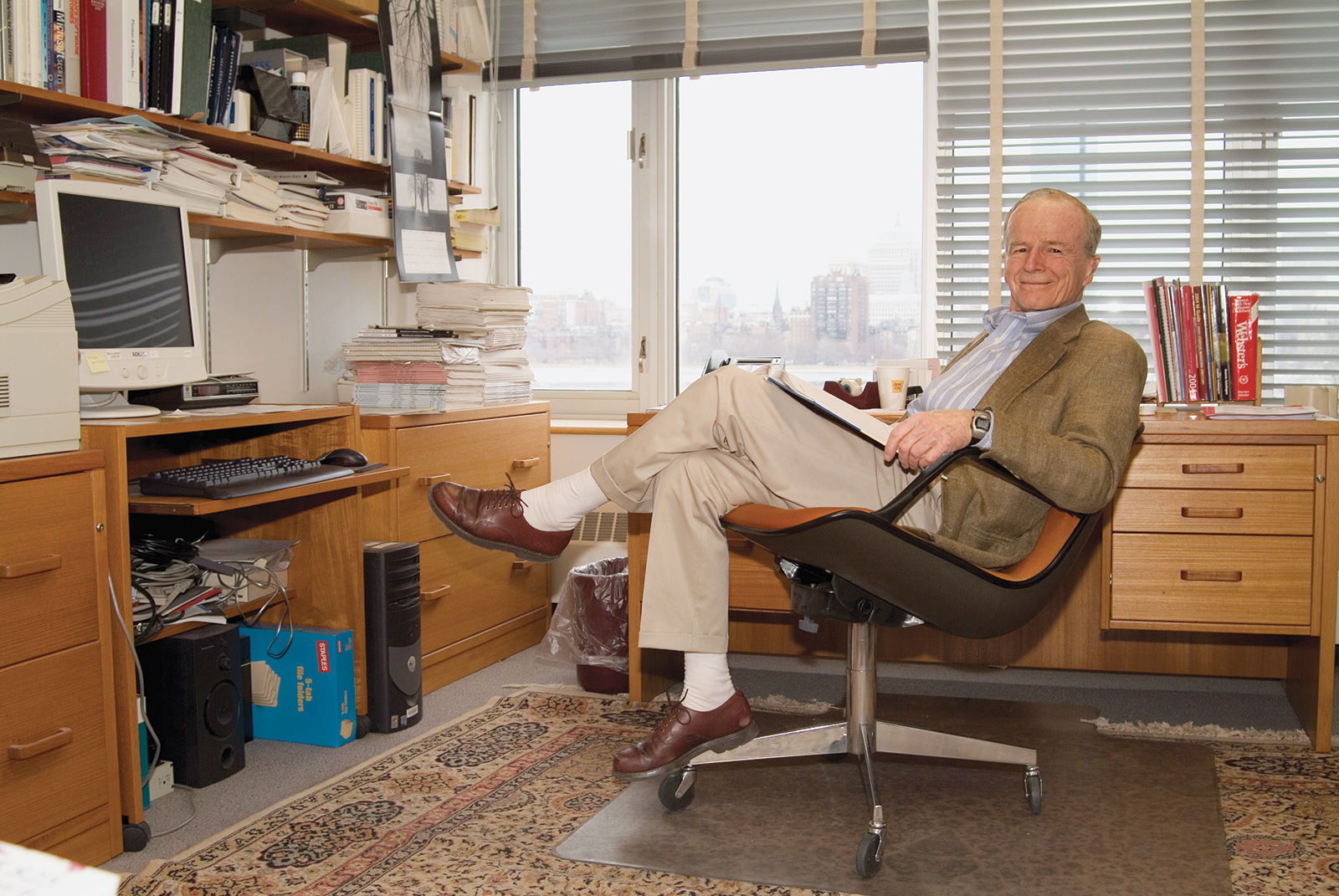From Ground Coffee to Big Data: the Enduring Influence of a Marketing Science Pioneer
-
-
MIT Spectrum
Filed Under
Recommended

In 1983, an academic journal called Marketing Science published an article about ground coffee. Co-authored by eminent MIT researcher John D. C. Little ’48, PhD ’55, it contained a statistical model showing how shoppers adjusted their coffee-buying preferences based on predictable factors such as brand loyalty, sale pricing, and in-store discounts. Little had been able to achieve this level of mathematical precision thanks to the emergence of the big-data revolution of that era, laser-scannable Universal Product Code (UPC) markings on food packaging, which for the first time made it practical to capture consumer behavior in enough detail to model it using scientific methods.
Thirty-five years later, MIT Sloan School of Management faculty member Juanjuan Zhang—recipient of a new MIT professorship created by Little’s family in his honor—remembers the ground-coffee paper vividly. “It was the first paper I ever read about marketing,” she says. Zhang, who studied game theory and econometrics at the University of California, Berkeley, cites Little as her inspiration for entering the field of marketing science—a field that Little, now an Institute Professor Emeritus and her longtime MIT colleague, is often credited with inventing.
In the current age of hyper-targeted advertising and data-driven product management, being scientific has become part of every marketer’s toolkit. This systematic reliance on data largely began with John D. C. Little.
To Zhang, marketing is “a way of communicating—of bridging the gap between production and adoption, between intention and acceptance.” Her research shows how that gap can affect almost anything. For instance, in 2010 Zhang studied how kidney-transplant patients tend to reject viable organs when they are farther down on the waiting list. The reasons for someone higher on the list “passing” on a vital organ transplant may have nothing to do with the organ’s medical quality, but the rational tendency of subsequent patients toward rejecting what others have rejected leads to 10% of donated kidneys going unused.
To Zhang, this is a marketing problem: patients are making sense of incomplete information in a way that harms their health. But trying to close this “information gap between experts and laypeople,” Zhang says, can also have unintended consequences—as she discovered while studying the effects of mandatory labeling policies for genetically modified organisms (GMOs) in foods. In an ongoing project, Zhang combined field data with a game-theoretical model to show that transparency about GMOs actually led people to avoid the labeled food more often, even though the current scientific consensus holds that genetically modified foods are safe.

“It shows that governments can use marketing too,” Zhang says. “The popular view is that a transparency-motivated policy of GMO labeling can’t go wrong: ‘We tell consumers what is in the food, so that they can make better informed decisions for themselves.’ But, as marketing researchers, we know that consumers are not scientists—they read news, they try to guess what science has to say, and that’s when even government policies of the best intention can backfire.”
Marketers aren’t traditionally seen as scientists, either. But in the current age of hyper-targeted advertising and data-driven product management, being scientific has become part of every marketer’s toolkit. This systematic reliance on data largely began with John D. C. Little.
Little earned an undergraduate degree in physics from MIT in 1948 before shifting his graduate studies to operations research. Also referred to as “management science” or “decision science,” operations research focuses on methods for optimizing solutions to complex problems using rigorous mathematical techniques. Little rose to eminence within the field with his proof of what would become known as “Little’s Law”: L=λW.
That compact equation might as well be the e=mc2 of operations research. It describes so-called queueing behavior: how long it takes for items to arrive at and pass through any system, whether it’s cars through a traffic stop or patients entering a hospital ER. Little’s successful application of generalizable mathematical rigor to an entire category of seemingly unrelated practical problems revolutionized his field—and fired his curiosity about bringing that same rigor to another practical domain: marketing.
“One of the things people have been reluctant to do was to call [this field] a science,” Little told an interviewer in 2012. “But everything has fundamentals. And they remain to be discovered and utilized.”
Excerpted from “Life in the Field: Juanjuan Zhang pushes marketing science forward, inspired by its original pioneer.” Read the full article in the Winter 2019 issue of MIT Spectrum magazine.
Photo (top): Institute Professor Emeritus John D. C. Little ’48, PhD ’55, in his office in 2005. Credit: Ed Quinn







